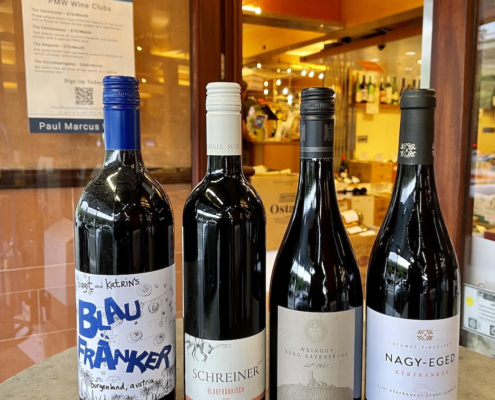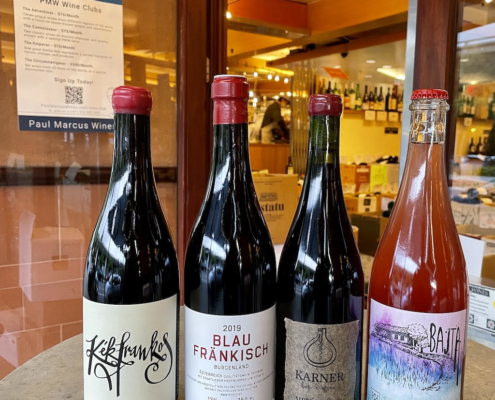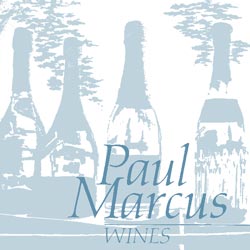Imagine a grape variety that gives you the silkiness and grace of pinot noir; the dark fruits, pepper, and floral notes of syrah; and the joyous lift and moderate alcohol of gamay. This grape shares nebbiolo’s knack for making a variety of wines–everything from easy everyday wines to important site-specific ones, not to mention singular rosés and sparkling wines. And, to make it even more palatable, it boasts an appealing quality-to-price ratio, with most coming in at under $25. Voilà: we give you blaufränkisch!
The best-known name of the grape, blaufränkisch, gives us an idea of its pedigree: From the Middle Ages onward, German-speaking peoples used variations of fränkisch (“from Franconia”) to distinguish higher-quality from run-of-the-mill varieties. Blaufränkisch is the name that’s used in Austria, which is the most important source of quality wines made from the variety. But there are lots of synonyms, depending on where it’s grown: kékfrankos in Hungary, limberger/lemberger in Germany, borgonja in Croatia, and gamé in Bulgaria, among others. (I’m not the only one to have noticed the partial resemblances to pinot noir and gamay!)

Whatever you call the grape, the wines made from it are as much fun to pair with food as they are to drink, thanks to their lively acidity, moderate alcohol, and judicious dollop of fruitiness. Start with the dishes you love to eat with pinot noir or syrah, especially savory things like mushrooms, tomatoes, sausages, and smoked meats. Then dial up the spices if you want: paprika, barbecue sauce, capsicum…. If you’re up for going Hungarian-style native, importer Eric Danch suggests offal (“bloody, minerally stuff”), culminating with kakashere pörkölt (rooster testicle stew). Back here in the Bay Area, experiment with izakaya plates: grilled and fried bites, pickled vegetables, and the like.
Here are eight examples of this variety from Paul Marcus Wines. (Continue reading for a special discount.)
2020 Pfneisl Blaufränker 1-liter [Austria]
Sisters Birgit and Katrin Pfneisl farm their family’s certified organic vineyards in eastern Austria, near the border with Hungary, and make this deliciously gulpable blaufränkisch. The wine is light, fresh, fruity, and just 12 percent alcohol. Chill it for 20 minutes to enhance all of these qualities. It’s great for barbecues, picnics, and camping–the full-liter bottle is finished with a screw cap, for easy access.
2019 Schreiner Blaufränkisch Burgenland – Rust [Austria]
Gernot and Victoria Schreiner practice certified organic farming in their hometown of Rust, on the western shores of Lake Neusiedl. This wine is from a parcel called Gemärk (limestone, sand, and sandstone). It’s aged in large, old oak casks for 14 months and is classic Burgenland blaufränkisch: inky black and blue fruits without heaviness and with a pleasing bitter hint. At 12.4 percent alcohol, it’s lively, fresh, and fun, yet with a serious, elegant side.
2017 Burg Ravensburg Blaufränkisch Sulzfeld [Germany]
Here’s a German example of blaufränkisch/lemberger. It’s perhaps a little higher-toned than the Austrian and Hungarian versions, with especially bright acidity. The grapes are farmed organically, and the wine comes in at 12.5 percent alcohol.
2017 Stumpf Pinceszet Kékfrankos Nagy-Eged [Hungary]
Father János and son Péter Stumpf dry-farm 20 hectares of vines in the Eger appellation of Hungary, halfway between Budapest and Tokaj. This wine is from 40-50-year-old vines. Nagy-Eged means “Eged Mountain,” and it’s the highest-altitude red-wine vineyard in Hungary. The wine is aged for 20 months in 500-liter acacia and Hungarian oak barrels and bottled unfined and unfiltered. The only addition is a small amount of SO2 at bottling. This is a kékfrankos that’s sophisticated and even a touch flashy, with dark fruit and noteworthy structure. It gains complexity with bottle age.
2020 Wetzer Kékfrankos [Hungary]
Peter Wetzer is a producer in the appellation of Sopron, right next to the border with Austria. His kékfrankos is a blend of several organically farmed 40-50-year-old vineyards, with loam, limestone, and mica-schist soils. Fermentation is in open vats and aging in used 500-liter Hungarian oak barrels. It’s bottled unfined and unfiltered, with a small addition of sulfur. Vivid dark fruits are etched with vibrant minerality and acidity. This is a lot of wine for the money.

2019 Moric Blaufränkisch Burgenland [Austria]
Roland Velich started Moric (MOR-itz) in 2001 with the goal of doing with blaufränkisch in Burgenland what producers have achieved with pinot noir in Burgundy, syrah in the Northern Rhône, and nebbiolo in the Langhe. (Read Alder Yarrow’s article “MORIC: The Apogee of Blaufränkisch.”) This wine is from 10-50-year-old vines growing in limestone, primary rock, and loam. Farming is uncertified organic, and fermentation is with indigenous yeasts in open vats and steel tank. Aging is in a combination of barrels ranging from 600 to 4,500 liters in size. No fining or filtration and minimal SO2 added at bottling. This is a super-classy wine that manages to be both impressive and understated at the same time.
2017 Karner Vitézföld Kékfrankos [Hungary]
Here is the wild and kinky side of kékfrankos. Gábor Karner is the godfather of natural wine in northeast Hungary (as well as a progressive metal drummer with the band Æbsence). His daughter Fanni works with him in the wine region of Matrá, between Budapest and Tokaj. Their wine is from the organically farmed single vineyard Vitézföld (“the good soldier’s land”). It sees one week of maceration and then 18 months of aging in stainless steel. Unfined, unfiltered, and no additions of any kind, including SO2 (ØØ). This is a serious natural wine: concentrated and complex, while walking the line between sauvage and fine.
2021 Kobal Blaufränkisch Pét-Nat Rosé Bajta [Slovenia]
We’ll finish–but maybe you should start–with an utterly hedonistic fizzy pink wine from Lower Styria (Štajerska) in Slovenia. Four hours of skin contact give the electric-pink color. Fermentation finishes in the bottle, resulting in a wine that’s juicy, yeasty, fruity, and exuberant–the opposite of serious!
Special Offer
Take 10 percent off any three or more blaufränkisch/kékfrankos that you buy through April 15th. The offer is mix-and-match: three different wines, three of the same thing, or anything in between. Use discount code frankish10 (no “c”) if you shop at our online store.

Leave a Reply
Want to join the discussion?Feel free to contribute!